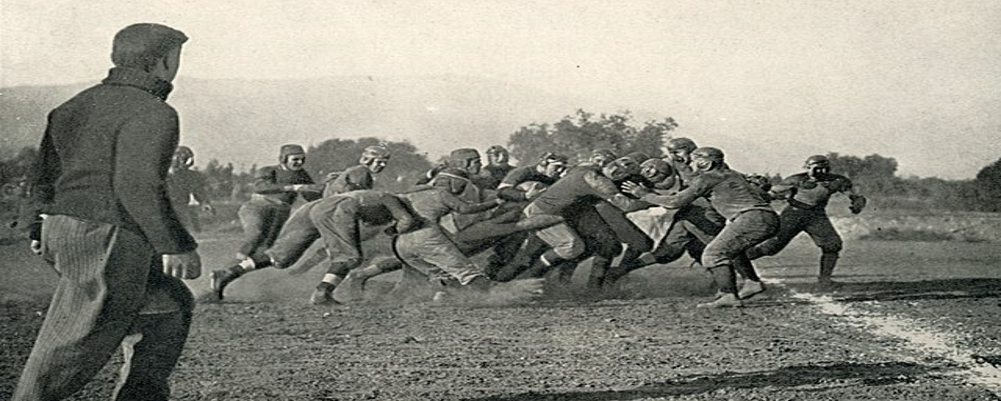Timothy Brown of Football Archaeology joins us to share the story of the stripes. The focal point of our discussion today revolves around the historical significance and evolution of striped helmets in American football.
This information comes from his original post: Football's First Striped Helmets.
Besides the above video, we also have the discussion in audio-only podcast format in a post titled: The Origins of Football's Iconic Striped Helmets.
As we delve into the origins of this distinctive feature, we are joined by Timothy P. Brown of Football Archaeology, who elucidates the timeline and context in which these stripes emerged. We explore the early instances of striping, from individual players to team-wide adoption, highlighting the innovative practices that led to these aesthetic modifications on helmets. Furthermore, we scrutinize the interplay between functionality and decoration, examining how these stripes served both practical and visual purposes throughout the history of the sport. Join us as we unravel the fascinating narrative behind one of football's most recognizable symbols.
Initially, helmet stripes served basic purposes: distinguishing teams when helmets lacked logos and aiding quarterbacks in spotting receivers downfield. As helmet technology advanced from leather to plastic in the mid-20th century, stripes became integral design elements, solidifying team identities and aesthetics. Think of the classic single stripe, double "racing" stripes, or even unique patterns that define legendary franchises.
Beyond team branding, stripes can hold specific meanings. Some college programs use helmet stripes to signify a player's status, with new recruits sometimes wearing thicker or differently colored stripes until they "earn" their official team designation. Ultimately, the stripe on a football helmet represents a blend of history, identity, and sometimes, even individual achievement within the team's culture.



